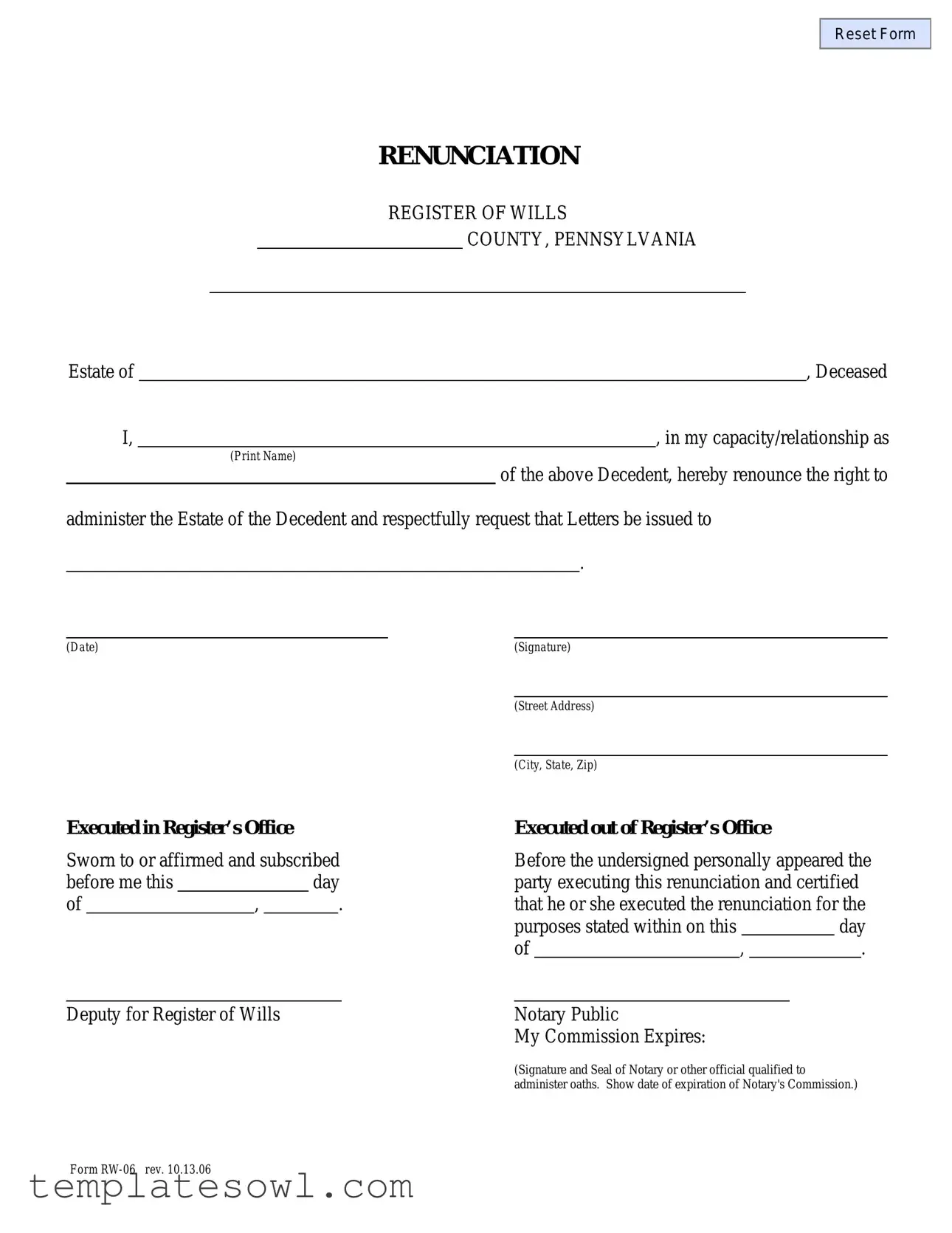What is the purpose of the RW 06 form?
The RW 06 form is utilized to officially renounce the right to administer the estate of a deceased individual. This document is crucial for individuals who, for any reason, choose not to take on the responsibilities that come with being an administrator of a will. By submitting this form, individuals ensure a smooth transition for appointing another person to handle the estate matters.
Who should complete the RW 06 form?
This form should be completed by individuals who have a legal or personal relationship with the deceased but do not wish to serve as the estate administrator. Commonly, this could be a family member or a friend who has been previously considered for administration duties. It is important that the individual filling out the form fully understands the implications of renouncing these rights.
What information is required on the RW 06 form?
The RW 06 form requires the full name of the decedent, the name of the individual renouncing their rights, their relationship to the decedent, and the name of the person to whom the responsibilities should be transferred. Additional information such as the date, the individual’s street address, city, state, and zip code is also necessary to properly identify the parties involved.
How is the RW 06 form submitted?
Once the RW 06 form is completed, it must be submitted to the Register of Wills in the appropriate county. Depending on the specific requirements of that office, it may also need to be executed before a notary public. This adds a layer of validation to ensure that the renunciation is genuine and complies with legal standards.
What happens after the RW 06 form is submitted?
After submission, the Register of Wills will process the form. If everything is in order, Letters of Administration or Letters Testamentary will be issued to the new appointee, who will then take over the management of the estate. The renouncing party will no longer have any authority or responsibilities regarding the estate.
Can the RW 06 form be revoked once submitted?
No, once the RW 06 form is submitted and processed, it cannot be unilaterally revoked. If circumstances change and the individual wishes to administer the estate after all, a new process must be initiated, including proper legal guidance. It is advisable to consider all options thoroughly before making the decision to renounce.

